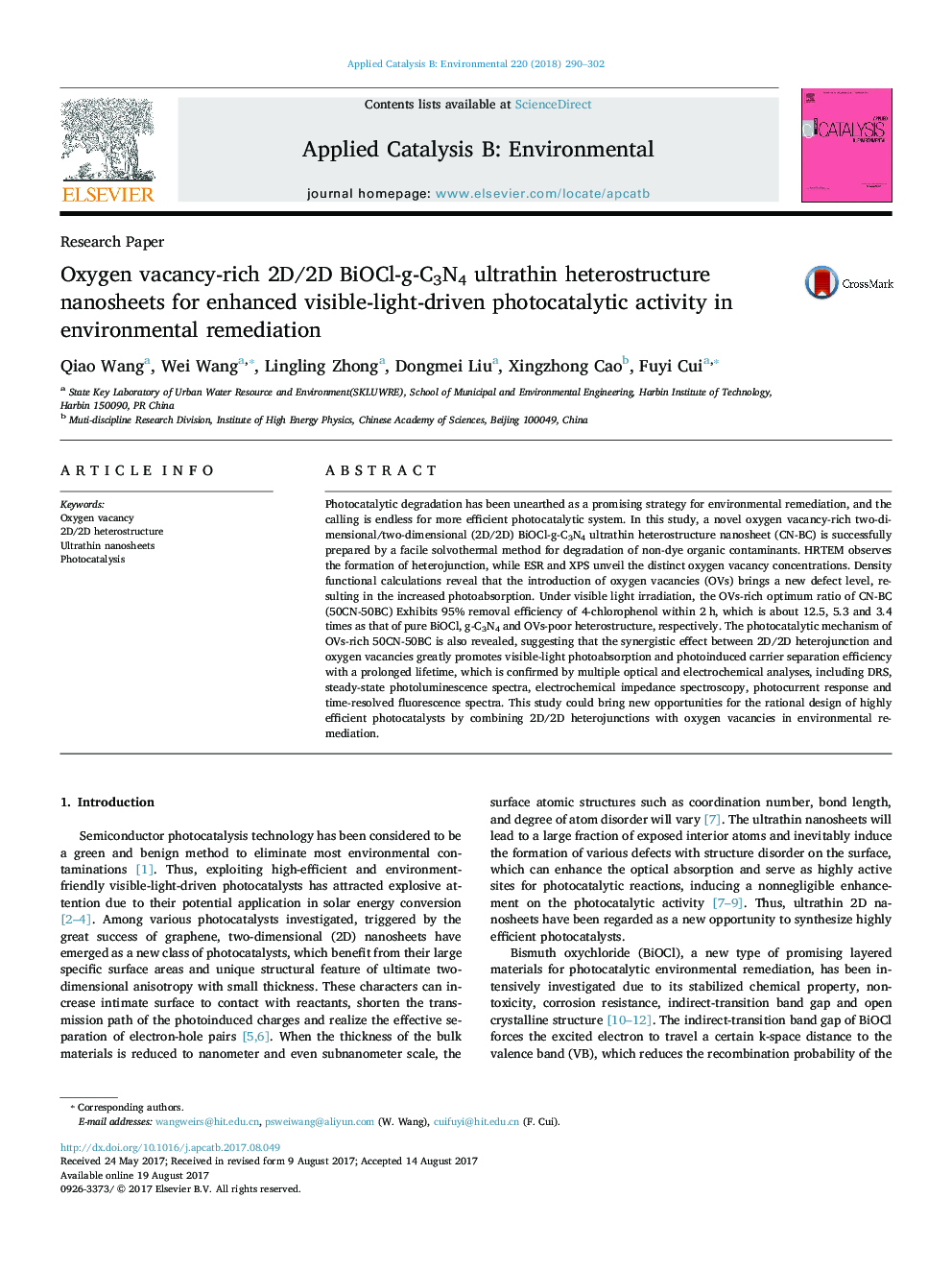| Article ID | Journal | Published Year | Pages | File Type |
|---|---|---|---|---|
| 6453598 | Applied Catalysis B: Environmental | 2018 | 13 Pages |
â¢Oxygen vacancy-rich 2D/2D BiOCl-g-C3N4 ultrathin heterostructures were fabricated.â¢The BiOCl-g-C3N4 exhibited high photocatalytic activity for non-dye organic contaminants.â¢The synergistic effect between heterostructure and oxygen vacancy led to the excellent photoactivity.â¢Good stability, recyclability and high mineralization were obtained from the BiOCl-g-C3N4.
Photocatalytic degradation has been unearthed as a promising strategy for environmental remediation, and the calling is endless for more efficient photocatalytic system. In this study, a novel oxygen vacancy-rich two-dimensional/two-dimensional (2D/2D) BiOCl-g-C3N4 ultrathin heterostructure nanosheet (CN-BC) is successfully prepared by a facile solvothermal method for degradation of non-dye organic contaminants. HRTEM observes the formation of heterojunction, while ESR and XPS unveil the distinct oxygen vacancy concentrations. Density functional calculations reveal that the introduction of oxygen vacancies (OVs) brings a new defect level, resulting in the increased photoabsorption. Under visible light irradiation, the OVs-rich optimum ratio of CN-BC (50CN-50BC) Exhibits 95% removal efficiency of 4-chlorophenol within 2Â h, which is about 12.5, 5.3 and 3.4 times as that of pure BiOCl, g-C3N4 and OVs-poor heterostructure, respectively. The photocatalytic mechanism of OVs-rich 50CN-50BC is also revealed, suggesting that the synergistic effect between 2D/2D heterojunction and oxygen vacancies greatly promotes visible-light photoabsorption and photoinduced carrier separation efficiency with a prolonged lifetime, which is confirmed by multiple optical and electrochemical analyses, including DRS, steady-state photoluminescence spectra, electrochemical impedance spectroscopy, photocurrent response and time-resolved fluorescence spectra. This study could bring new opportunities for the rational design of highly efficient photocatalysts by combining 2D/2D heterojunctions with oxygen vacancies in environmental remediation.
Graphical abstractDownload high-res image (222KB)Download full-size image
